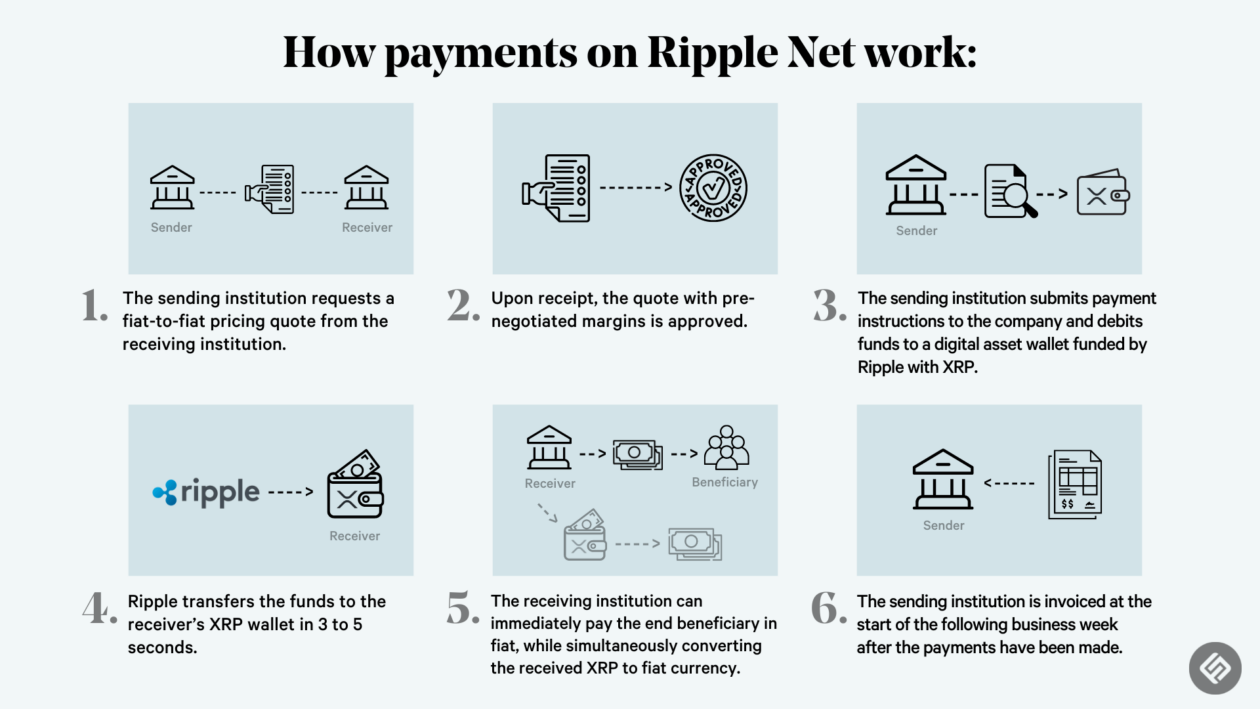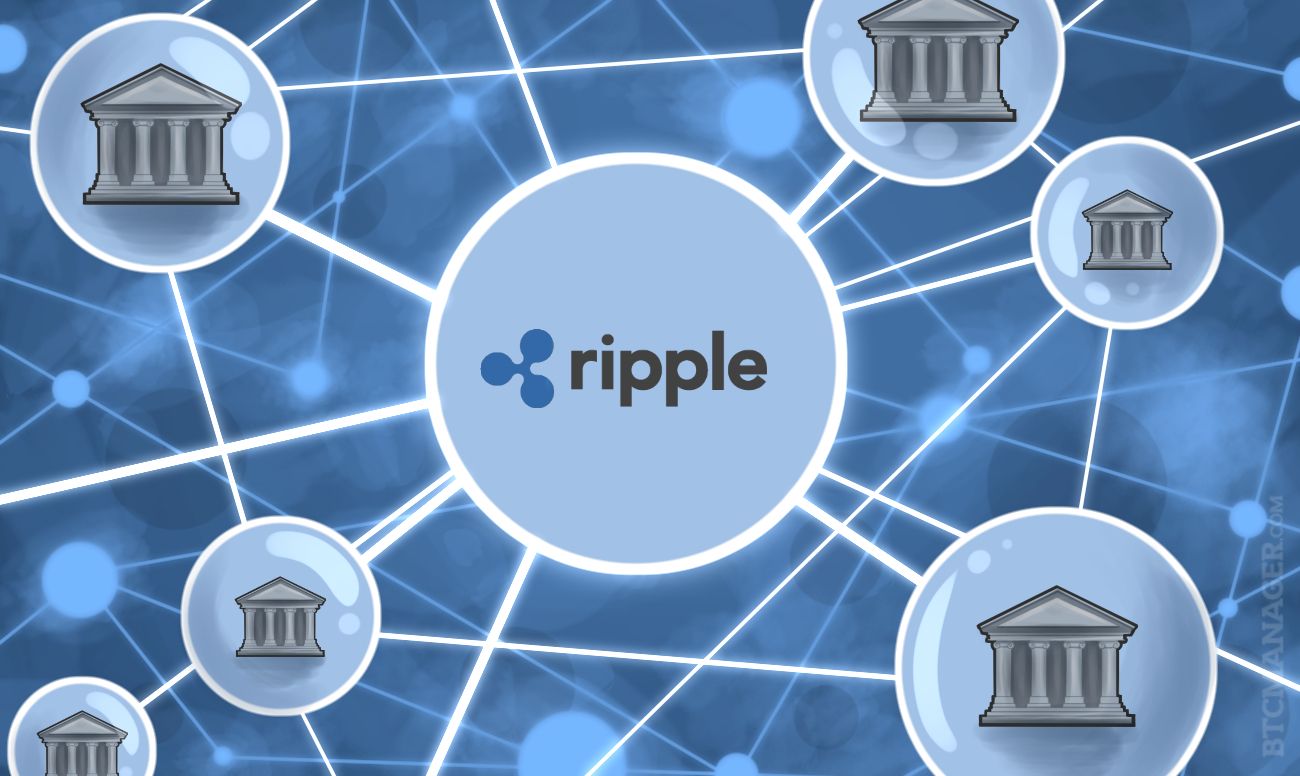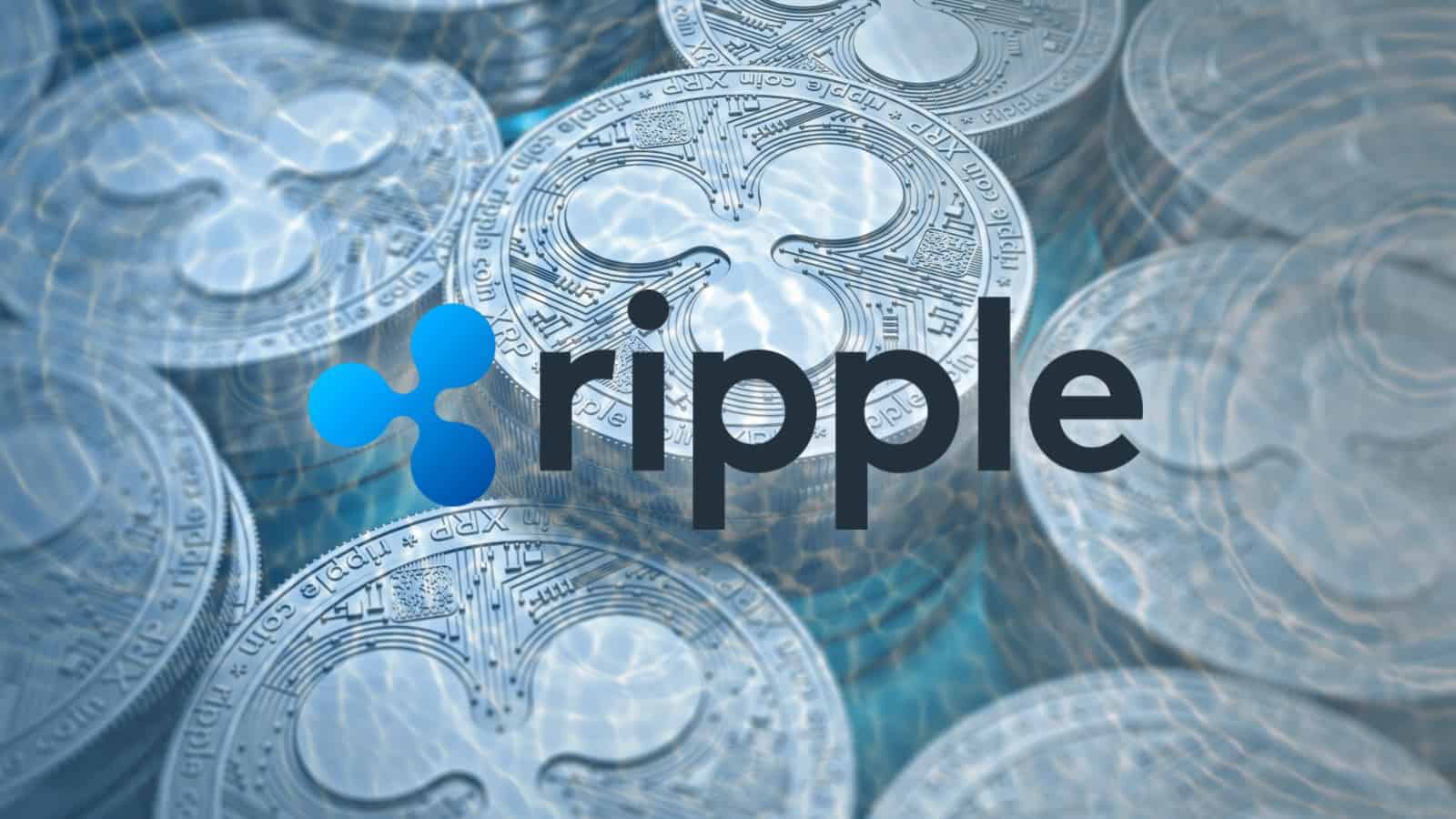Ripple and XRP

Ripple is a blockchain-based payments network that facilitates fast, efficient, and cost-effective cross-border transactions. XRP is the native cryptocurrency of the Ripple network, playing a crucial role in facilitating these transactions.
History of Ripple and XRP
Ripple Labs, the company behind the Ripple network, was founded in 2011. The initial concept focused on enabling faster and cheaper international payments for financial institutions. XRP was introduced in 2012 as a digital asset designed to facilitate transactions within the Ripple network.
Ripple’s Technology and Applications
Ripple’s technology is based on a distributed ledger, which enables a shared, immutable record of transactions. This ledger is maintained by a network of servers called validators.
Ripple’s core functionalities include:
– Cross-border payments: Ripple enables faster and cheaper cross-border payments by using XRP as a bridge currency.
– Real-time settlement: Transactions on the Ripple network are settled in real time, reducing delays and uncertainties.
– Reduced transaction costs: Ripple’s network significantly reduces the costs associated with traditional cross-border payments, making it more affordable for both individuals and businesses.
Ripple’s technology is being used by various financial institutions, including banks, payment processors, and money transfer companies.
Value Proposition of XRP
XRP is a digital asset that plays a crucial role in the Ripple network. It acts as a bridge currency, facilitating transactions between different currencies.
The value proposition of XRP stems from its:
– Speed and efficiency: XRP transactions are processed quickly and efficiently, enabling near-instantaneous settlement.
– Low transaction fees: XRP transactions have significantly lower fees compared to traditional payment systems.
– Scalability: The Ripple network is designed to handle a high volume of transactions, making it suitable for large-scale payments.
XRP has the potential to be used for a wide range of applications, including:
– Cross-border payments: Facilitating fast and affordable international money transfers.
– Micropayments: Enabling small, frequent transactions, such as online content purchases.
– Remittances: Simplifying and lowering the cost of sending money to family and friends abroad.
Ripple’s Ecosystem and Partnerships: Ripple Xrp

Ripple’s success hinges on its robust ecosystem and strategic partnerships, which play a pivotal role in driving the adoption of XRP and its broader financial network. Ripple’s ecosystem encompasses a diverse range of entities, including financial institutions, technology providers, and other stakeholders, all collaborating to revolutionize cross-border payments.
Key Partnerships and Collaborations
Ripple has cultivated a vast network of partnerships with prominent financial institutions, technology providers, and government agencies worldwide. These partnerships are crucial for expanding the reach and adoption of Ripple’s solutions, including XRP, RippleNet, and its suite of products.
- Financial Institutions: Ripple has established partnerships with major banks and financial institutions globally, including Santander, American Express, MoneyGram, and Standard Chartered. These partnerships enable these institutions to leverage Ripple’s technology for faster, more efficient, and cost-effective cross-border payments.
- Technology Providers: Ripple collaborates with technology providers like IBM, Oracle, and Microsoft to integrate its solutions into existing financial systems, enhancing interoperability and seamless adoption. This collaboration ensures compatibility and integration with existing infrastructure, facilitating smoother implementation and wider adoption.
- Government Agencies: Ripple has engaged with government agencies in several countries, including the United States, Japan, and South Korea, to explore the potential of blockchain technology for cross-border payments and financial inclusion. These partnerships aim to foster regulatory clarity and pave the way for broader adoption of Ripple’s solutions.
Impact of Ripple’s Partnerships on the Adoption of XRP and its Ecosystem
Ripple’s partnerships have significantly impacted the adoption of XRP and its ecosystem. The integration of XRP into RippleNet has led to increased liquidity and reduced transaction costs for financial institutions, driving wider adoption.
- Increased Liquidity: XRP’s use as a bridge currency within RippleNet enables financial institutions to settle cross-border payments instantly and efficiently, reducing the need for pre-funding and minimizing liquidity risks. This has made XRP a more attractive option for institutions seeking to optimize their payment processes.
- Reduced Transaction Costs: XRP’s low transaction fees and speed compared to traditional payment methods have made it a cost-effective solution for financial institutions. This has further incentivized adoption, as institutions can save on transaction costs and improve their overall profitability.
- Enhanced Network Reach: Ripple’s partnerships have expanded the reach of its ecosystem, enabling financial institutions to connect with a wider network of counterparties. This increased connectivity facilitates faster and more efficient cross-border payments, fostering greater financial inclusion and global trade.
Role of RippleNet in Facilitating Global Payments and its Relationship to XRP
RippleNet is Ripple’s global payments network that connects financial institutions and enables them to send and receive payments securely and efficiently. XRP plays a crucial role within RippleNet, serving as a bridge currency for cross-border transactions.
- Bridge Currency: XRP acts as a bridge currency within RippleNet, enabling financial institutions to settle payments in different currencies without relying on traditional correspondent banking networks. This eliminates the need for multiple conversions and reduces settlement times, making cross-border payments faster and more cost-effective.
- Liquidity Pool: XRP’s liquidity pool within RippleNet provides financial institutions with immediate access to funds in different currencies, facilitating instant settlement and reducing liquidity risks. This ensures that transactions are completed promptly and efficiently, regardless of the currencies involved.
- Enhanced Security: XRP’s decentralized nature and robust security protocols enhance the security of transactions within RippleNet. This ensures that payments are protected from fraud and manipulation, building trust and confidence among participating institutions.
XRP’s Market Dynamics and Volatility

XRP, Ripple’s native cryptocurrency, is known for its price volatility, which can be both an opportunity and a risk for investors. Understanding the factors that influence XRP’s price fluctuations is crucial for navigating the market effectively.
Factors Influencing XRP’s Price Volatility
The price of XRP is influenced by a combination of factors, including:
- Ripple’s Business Activities: Ripple’s success in expanding its network of financial institutions and promoting the adoption of XRP for cross-border payments significantly impacts XRP’s price. Positive developments, such as new partnerships or increased transaction volume, can drive up the price, while setbacks or regulatory challenges can lead to declines.
- Cryptocurrency Market Sentiment: XRP’s price is also influenced by broader market trends. For example, during periods of general bullish sentiment in the cryptocurrency market, XRP’s price tends to rise, while periods of market correction can lead to significant price drops.
- Regulatory Landscape: The regulatory environment surrounding cryptocurrencies, particularly in the United States, has a significant impact on XRP’s price. Uncertainties and potential regulatory actions can lead to volatility, as investors react to the perceived risk.
- Supply and Demand Dynamics: Like any other asset, the supply and demand for XRP play a crucial role in determining its price. Increased demand, driven by factors such as increased adoption or institutional investment, can lead to price increases, while a surplus of supply can put downward pressure on the price.
Comparison with Other Cryptocurrencies, Ripple xrp
XRP’s volatility is generally considered to be relatively high compared to other major cryptocurrencies, such as Bitcoin and Ethereum. This is partly due to its smaller market capitalization and the fact that it is more closely tied to Ripple’s business activities, which can introduce more volatility.
Potential Risks Associated with XRP’s Volatility
The high volatility of XRP presents both opportunities and risks for investors.
- Price Fluctuations: The rapid and unpredictable price swings can lead to significant losses for investors who are not prepared for such volatility. This risk is amplified for investors who use leverage or margin trading, as these strategies can magnify both profits and losses.
- Regulatory Uncertainty: The regulatory landscape surrounding XRP remains uncertain, and any changes in regulations could have a significant impact on the price. This uncertainty can create volatility and make it difficult for investors to predict future price movements.
- Dependence on Ripple: XRP’s price is closely tied to the success of Ripple’s business. If Ripple’s business experiences setbacks, it could negatively impact the price of XRP. This dependence creates a risk for investors who are not comfortable with the level of concentration risk associated with XRP.
Regulatory Landscape and Its Implications
The regulatory landscape surrounding XRP has been a source of significant uncertainty and volatility. The U.S. Securities and Exchange Commission (SEC) has been investigating Ripple over allegations that XRP is an unregistered security. The outcome of this investigation could have a significant impact on XRP’s future.
- SEC Investigation: The SEC’s investigation has created a significant amount of uncertainty and volatility in the XRP market. Investors are unsure about the potential implications of the SEC’s findings and how they might affect XRP’s future. This uncertainty has led to price swings and a decline in investor confidence.
- Potential Reclassification: If the SEC determines that XRP is a security, it could face stricter regulations, which could impact its adoption and price. This could limit the use of XRP for cross-border payments and make it more difficult for Ripple to attract new customers.
- Global Regulatory Landscape: The regulatory landscape for cryptocurrencies is evolving globally. While some countries have adopted a more welcoming approach, others have implemented stricter regulations. This global regulatory landscape could create challenges for XRP’s future, depending on how different jurisdictions classify and regulate cryptocurrencies.
Ngomongin Ripple XRP, kayaknya ngga jauh beda deh sama urusan nyari kain penutup kursi. Eh, ngomong-ngomong soal kain penutup kursi, pernah denger kan kalo ada yang ngasih harga sewa cuma 50p? Kayak di sini nih , murah banget! Nah, balik lagi ke Ripple XRP, siapa tau harganya juga bisa murah kayak kain penutup kursi.
Hahaha, ngarep banget ya?
Ngomongin Ripple XRP, ingetnya tuh kayak si Bapak di pasar, ngasih kembalian pake koin recehan. Eh, tapi tau gak sih, si Ripple XRP ini ternyata bisa dijadiin alat pembayaran buat proyek-proyek kota kayak yang digarap Mayor Tiffany Henyard di sana.
Lumayan lah, bisa buat beli es doger sambil ngobrolin perkembangan kota. Biar makin maju, pake Ripple XRP aja!
